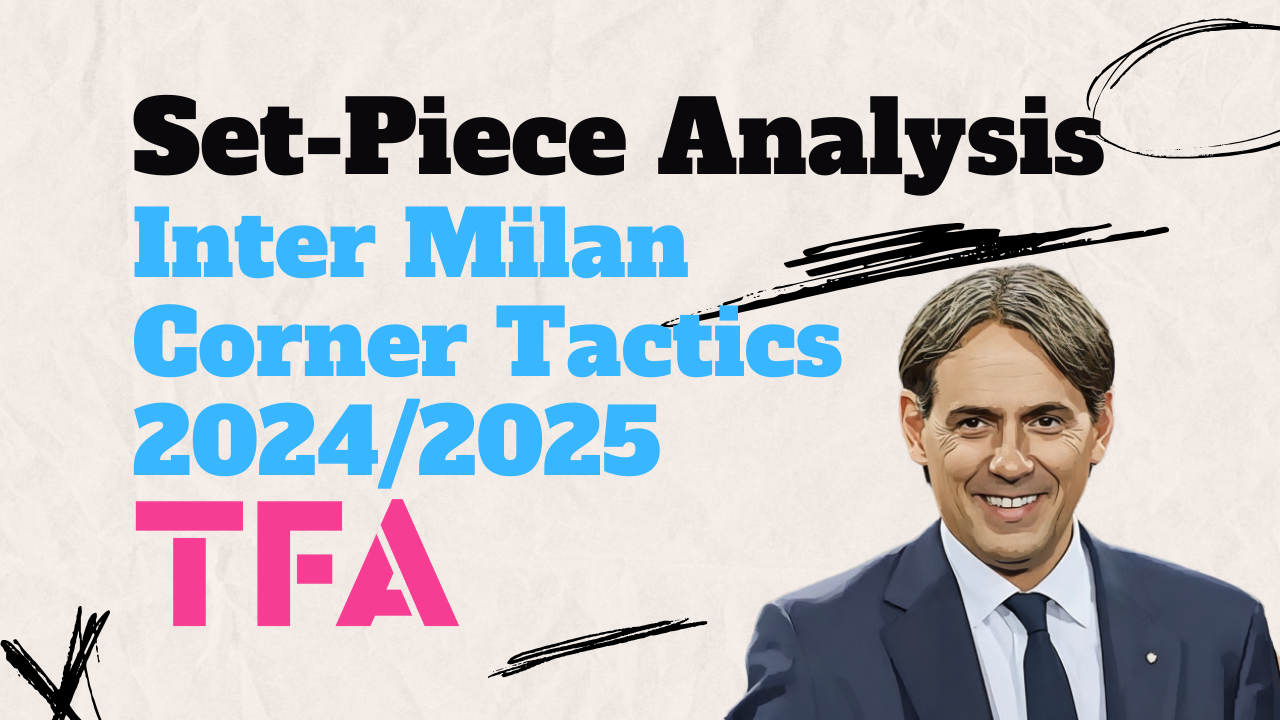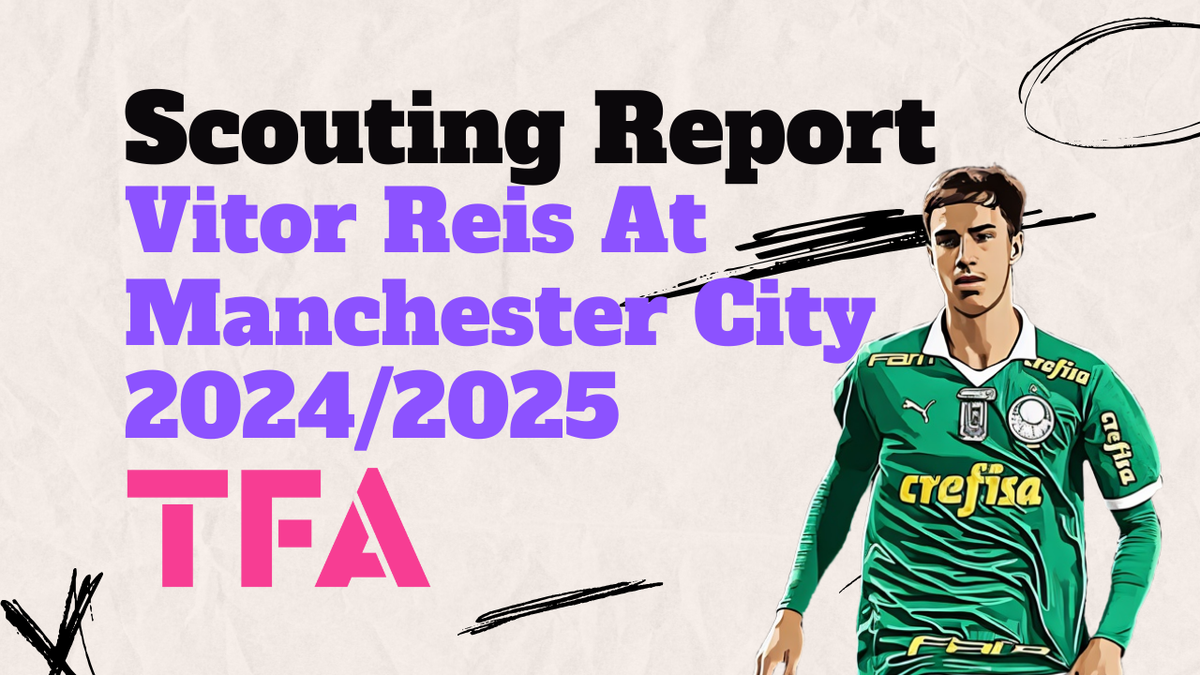The competition is intensifying in Serie A.
Napoli top the table with 50 points after 21 matches, just three points ahead of Inter Milan, who have 47 points and played one less match.
Atalanta and Lazio follow them, with 43 and 39 points in third and fourth place, respectively.
Napoli have overcome their competitors on the defensive side, conceding just 14 goals in 21 matches, while Inter Milan have the best attack, scoring 51 goals despite playing one less match.
When the competition is intense, fine margins can be crucial in determining the title winner.
One such margin is set-pieces.
Inter Milan dominate nearly all aspects of set-pieces in Serie A at the time of writing, with the most goals (9), the most shots (90), and the highest xG from set plays (8.61).
In this tactical analysis, we will focus on how Simone Inzaghi‘s team, with coach Ferruccio Cerasaro's set-piece expertise, is proving excellent at generating creative and varied ideas.
We will also show the tactics they used to exploit their talented set-piece specialists, such as Hakan Çalhanoğlu and Federico Dimarco.
Two Takers & Denzel Dumfries' Starting Position
The most significant thing Inter have is, a lot of the time, the use of two takers, and they have so many uses of this trick.
The first one makes it difficult for the opponent's zonal line to expect the out-swinging cross, targeting Denzel Dumfries, who starts near the edge of the box.
Let's watch the video first and then explain it in detail.
— Footie Clips (@FootieClips) January 21, 2025
In the photo below, Lazio defend with five zonal defenders (green), a rebound defender near the edge of the box (yellow), a short-option defender (pink), and an additional short-option defender (orange) to help in case the ball is played shortly.
The remaining two are man markers.

As shown below, Inter have two takers, along with six players to attack the box, with Dumfries starting late, and two rebound defenders (pink).
The second taker joins them to form the trio of rebound defenders.
Here, you can ask about the purpose of that!
When you have two takers, one can send an in-swinging cross while the other can send the out-swinging one; the zonal line can't predict the cross.
Inter want to keep the zonal line distracted because they want to send an out-swinging cross to the middle area in front of the six-yard box.
If the taker was just a right-footed player, the zonal line would easily be able to take some steps up due to the expected ball trajectory.
The starting position of Dumfries also makes him out of the man markers' sight.
This allows him to run enough distance before facing the zonal defender, which allows him to jump higher than the zonal defender who jumps from a stationary phase, which is known as a dynamic mismatch.
The first three runners (white) evacuate the targeted area for him while #4 distracts the goalkeeper to delay his reaction so as not to claim the ball and then, go away.
#5 will run after him to be in the ball's trajectory in case the ball is overhit.

As shown below, Dumfries runs while the zonal defender starts to get up late.

The plan works, as shown below.

Two Takers & Short Corner Tactics
The second advantage of having two takers is that one of them can be a quick short-pass option, which they exploit to achieve numerical superiority over the short-option defender quickly.
The first superiority is having a two-vs-one situation quickly.
— Footie Clips (@FootieClips) January 21, 2025
In the photo below, the opponent defends with a man-marking defending system with only two zonal defenders (green).
Note the opponent leaves a player forward for counterattacks, making the rebound defenders stand slightly back.
A taker passes the ball to the other, creating a 2v1 situation over the short-option defender, while the zonal defender takes time to come to help.
The main targeted player (blue) will go to the far post because it is free from zonal defenders.
He will be on the defender's blind side, using his teammate as a screen (his teammate blocks his man marker to free him).
Two players (yellow) also go to the far post to take the attention away from the blue one and to be other targeted options, too, in case the cross is inaccurate.

As shown below, targeting the far post is common in these cases because man markers can't keep tracking the ball in front of them and the attackers behind them.
This is called an orientation problem (making it difficult for the marker to keep tracking the ball and the attacker at the same time).

They can use this numerical superiority in many ways, such as a 3v2 situation in which the first edge-of-the-box player joins the game.
— Footie Clips (@FootieClips) January 21, 2025
In the photo below, the opponent is ready to go to the short area with two defenders (a close zonal defender in green and a short-option defender in pink).

In this case, they can pass to the first edge-of-the-box player, who has a good area to send a dangerous cross.
The only edge-of-the-box defender stands in the middle between the two edge-of-the-box attackers, which delays his reaction.

They have some variations in this idea, such as using the second taker in a different way to distract and slow down the zonal defender who comes to help.
— Footie Clips (@FootieClips) January 21, 2025
In the photo below, AC Milan defend with three zonal defenders (green), a short-option defender (green) and six man markers.
The first zonal defender steps forward to prepare to press the short corners, so the second taker runs toward him to fix him.
The taker passes the ball to the left edge-of-the-box player (out of the shot in yellow), who takes some quick steps toward the taker.

As shown below, the second taker fixes the zonal defender who is supposed to come to help, so the situation is still 2v1.
They target the near post behind the third zonal defender using the same orientation problem.

As shown below, the plan works, and another attacker goes to the far post to frame the goal using the same orientation problem.

The second advantage of this trick is dragging the opponent's rebound defender to come to help against the probable short corner.
This makes the edge of the box empty so the rebound is mostly for Inter in case they play the corner directly, not short.
— Footie Clips (@FootieClips) January 21, 2025
In the photo below, the edge-of-the-box defender goes to help be ready against probable short corners.
The cross is sent directly, but the rebound is easy for Inter.

As shown below, the second ball could be a goal.

Overlapping In Short Corners
The third main idea they have is also about short corners, but without two takers and with overlapping.
— Footie Clips (@FootieClips) January 21, 2025
In the photo below, the opponent defend with five man markers (green), a short-option defender (pink), an edge-of-the-box defender (yellow) and three man markers.

In this idea, a very close short-option attacker receives the pass while the taker overlaps around him.
First, he can't come back to be one of the trio rebound defenders.
Hence, after distracting him, the yellow player stands near the goalkeeper and returns to be the left rebound player.
Coming back to the attacking strategy, the first zonal defender (green) takes a long distance to reach the overlapped taker, which means the taker has enough time to send the cross from a dangerous point.

As shown below, the same orientation problem is used to target the far post (blue) on the last zonal defender's blind side.
An attacker is also moving in front of him to take his attention.

They have variations in the same idea, such as passing to the taker back in the box.
— Footie Clips (@FootieClips) January 21, 2025
In the photo below, the short-option attacker passes the ball to the first edge-of-the-box player directly while the rebound defender stands between the two edge-of-the-box attackers, which delays his reaction.

As shown below, the taker runs to receive the area left by the first zonal defender while a player (black) tries to fix the first remaining zonal defender.
The plan works and the taker (Dimarco) can shoot the ball directly.

As another variation and exploitation, they target the area ahead of the near post with a direct cross in case the first zonal defender understands the previous trick, taking steps forward to be closer to the short area.
— Footie Clips (@FootieClips) January 21, 2025
In the photo below, the first zonal defender steps forward earl, trying to reach as fast as possible, so they send a cross in the space he left to a free player (blue).
Here, we should mention the role of the two players near the goalkeeper.
The first one tries to block the goalkeeper or take his attention and then goes to frame the goal to receive the probable flicked headed pass.
However, the most important role of these two players is to attract the first two zonal defenders to step some steps back to open the targeted area more for the targeted player who comes from their blind side.

Conclusion
This analysis shows how Inter have tried to use attacking corners, using their best technical players, such as Hakan Çalhanoğlu and Federico Dimarco.
This set-piece analysis has also shown that Simone Inzaghi’s side has good ideas and variations for exploiting short corners, each of which could lead to a chance or a goal.




Comments